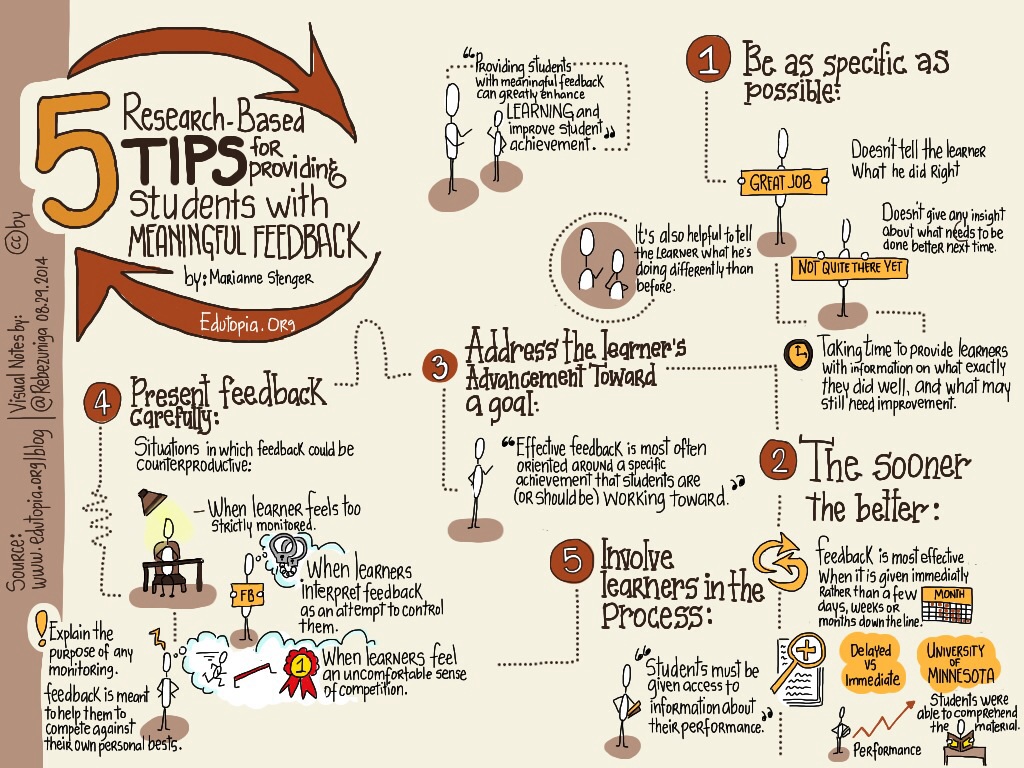
In our previous post, we discussed the why, how, and when of giving feedback, and we identified formative feedback as one of our most effective tools for teaching and learning. In this post, we’ll continue this discussion of giving effective feedback by looking at what formative feedback looks like, describing both its characteristics and providing examples of formative feedback statements.
What Formative Feedback Looks Like
- Non-evaluative: Describe what you see in the work and its effectiveness: “This example provides a clear illustration of your point here.” If you do use evaluative comments like “Good” or “Confusing,” be specific as to why you believe it to be so.
- Personal: Connect your feedback to the specific draft: “Can you expand on your discussion of hard freezes reducing disease-carrying insect populations to better explain why climate change is expected to increase medical costs in the coming decades?”
- Tied to learning goals: “The goal of this assignment was to compare the theories of Halbwachs, Assmann, and Fentress and Wick and then argue which you believe to be most useful in this context. I like how you have described and compared their theories and would like to see more about which you believe is the most useful here.”
- Provides opportunities for revision and furthering learning: Use probing questions focused on higher-order thinking and issues. Avoid “however” and “but” phrases that undercut praise, “The argument here is well organized, but the ideas need to be developed.” Instead, frame the issue “The argument is well organized. How might you further develop and support ideas about the differences between Third- and Fourth-wave feminism?”
Emily Wray’s RISE model offers another method of thinking about and providing formative feedback. Designed for peer-review and aligned with Bloom’s taxonomy of educational objectives, the RISE Model’s four categories of formative feedback can help us to think about the kinds of feedback we want to offer to best tailor feedback so that it is non-evaluative, personal, timely, tied to learning goals, and focused on facilitating revision and learning. The RISE Model’s categories are:
- Reflective feedback that describes and analyzes the content.
- Inquiring feedback that asks questions in order to prompt further thinking and application of ideas.
- Suggestive feedback offered to improve the current draft.
- Elevative feedback to foster significant revision and creative new approaches.
For more ideas regarding feedback and revision, check out our blog posts “Giving Effective Feedback,” “Characteristics of Effective Feedback,” “Helping Students Revise,” “A Few Tips for Teaching (with) Writing,” and “Exploring One Faculty Member’s Decision to Stop Writing on Student Papers.“
